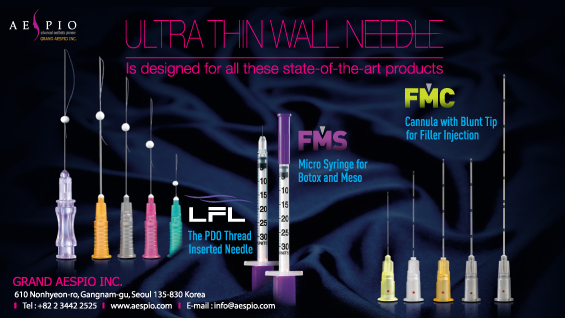
Antioxidant’s protective effects against IR rays
UV rays are subdivided into UVA, UVB, and UVC based on the wavelength and corresponding skin permeability. IR rays are also subdivided into IRA, IRB, an IRC based on the depth of skin penetration. IRC is mostly absorbed in the epidermis. About 2/3 of IRB is absorbed by the epidermis, whereas 20% of it reaches the dermis and 8% reaches the subcutaneous fat. About 17% of IRA is absorbed into the subcutaneous layers and 48% is absorbed in the dermis. In 1978, Schwartz et al. evaluated the skin cancer risk of IR rays reaching deep skin layers.
IR rays make up about 40% of sunlight reaching the Earth and is responsible for the warm sensation when our skin is exposed to sunlight. IR rays raise the skin temperature to 40℃, promotes release of oxygen free radicals causing DNA damage. IR rays alone can thicken the skin and cause signs of photo-aging such as wrinkles. Various studies have examined the efficacy of sunblock on shielding the skin from UV rays and contributed to development of effective UV blocking products. On the other hand, skin care products with chemical and physical properties for blocking IR rays are non-existent. Typical sunblocks do not provide protection against IR rays.
[Advertisement] ULTRA THIN WALL NEEDLE – Manufacturer: AESPIO(www.aespio.com)
When irradiated on cells, IR rays create oxygen free radicals within mitochondria. This has significant impact on skin aging. Many studies are currently examining the effect of MitoQ, a coenzyme Q10 derivative that prevents IR induced release of oxygen free radical.
It is fair to say that we have not paid enough attention on the dangers of IR rays. Fortunately, many new studies are looking at ways to protect the skin from IR rays. Other than the sun, various artificial products also release IR rays and we are exposed to artificial IR rays in our daily lives. It is important to prevent unnecessary exposure to artificial IR rays. It is difficult to find an effective skin care product that protects and restores the skin from photo damage. Applying antioxidants, on the other hand, can protect the skin from harmful IR rays. Substances such as vitamin C, flavonoids, soy's isoflavone, genistein (soybean), and N-acetylcysteine protects the skin from UV and IR rays.
In 2011, Darvin et al. reported that IR rays induce release of free radicals and eating fruits and vegetables as well as using antioxidant-rich cosmetics increase the antioxidant networks of the skin and effectively protects the skin from IR exposure.
Vitamin C, vitamin E
Vitamin C, vitamin E, and carnosic acid (rosemary extract) are naturally stabilized antioxidants and protect the cells from oxidative stress induced by UV rays. Carotenoids such as licopene and β-carotene have antioxidative actions. They require vitamin E for enhancing stability and cell absorption of licopene.
Vitamin C is water-soluble and vitamin E, carotenoid, β-carotene, licopene, and oxycarotenoid (zeaxanthin, lutein) are fat-soluble. Vitamin E, also known as tocopherol, has antioxidative action against biomembrane free radicals and reduces DNA damage and malignant transformation. Vitamin C and coenzyme Q10 help vitamin E activity and restore antioxidant form when neutralizing free radicals.
Glucosinolate
Licopene, lutein β-carotene, and quercetin are antioxidants that act directly on oxygen free radicals. However, nutrients such as glucosinolate have indirect antioxidative and detoxifying actions. Ingesting foods rich in glucosinolate can maintain antioxidative effects for 3-4 days. Broccoli sprouts, cauliflower sprouts are rich in glucosinolate.
Polyphenols
Polyphenols are one of the richest natural antioxidants found in food and have various beneficial actions including UV protection. Polyphenols are particularly abundant in red, yellow and purple vegetables and fruits. Flavonoids, a type of polyphenol, is the richest in food and polyphenols are generally more abundant in fruits than vegetables. Polyphenols absorb UVA, UVB, and UVC and reduce oxidative stress, infection and DNA damage, thereby lowering the risk of skin cancer. Polyphenol found in green tea is easily absorbed in the body and rapidly restores or removes UVB induced DNA damage. Besides ingesting, local application of polyphenols can also protect against UV rays. Polyphenols include flavonol, isoflavone, anthocyanin, flavanol, and flavanone. Favone is rich in red paprika and celery. Flavanon is rich is citrus fruits (particularly oranges) and anthocyanidin is rich in cherries, plums, strawberries, raspberries, grapes, red currant, black currant, etc. Flavonol, quercetin, is rich in yellow and red fruits or in tea and flavanol is rich in red wine.
-To be continued-




















